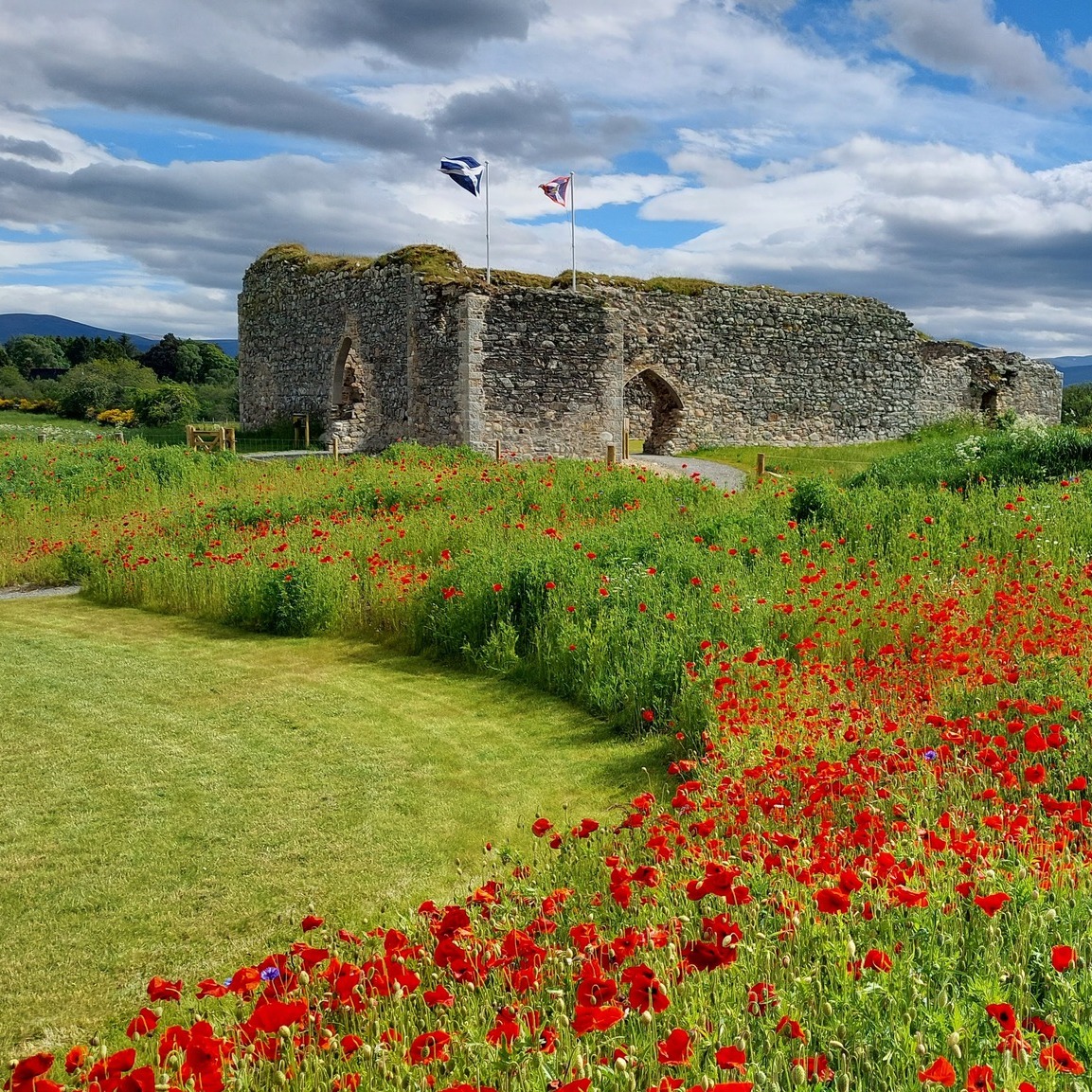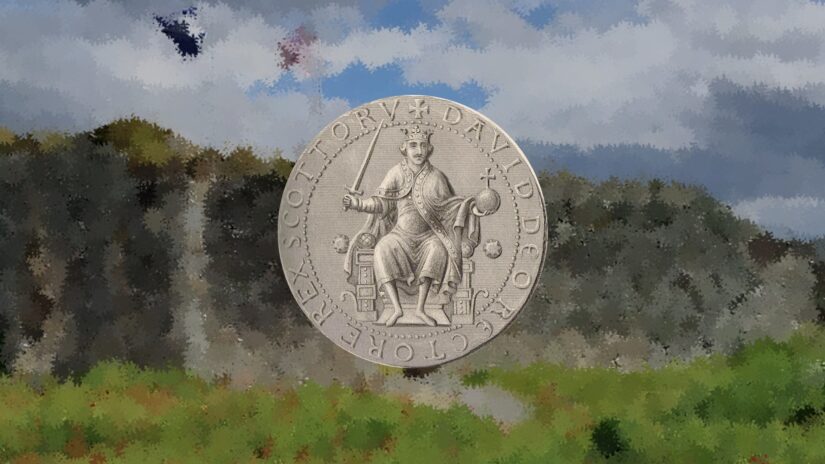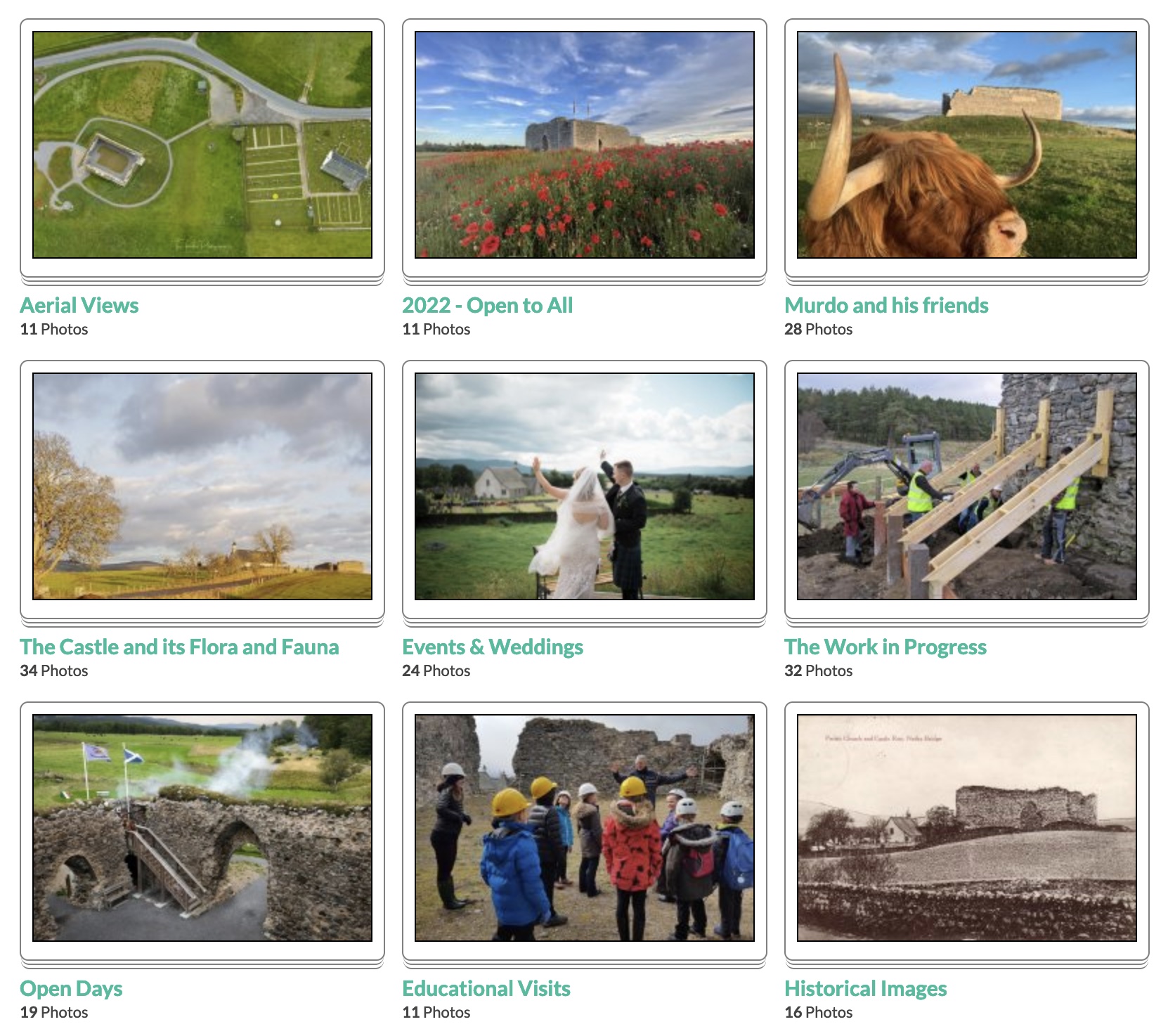Thirty Years of Dedication …
In 2024, it will be 30 years since Richard Eccles was asked about the history of what was then the “old forgotten ruin” that stood on a mound just to the east of Nethy Bridge. He recalled clambering over it as a child but knew little else as he stood ‘neath the high, craggy walls. That was then: almost three decades on, Richard has been on some journey – a “long, drawn-out voyage of discovery” that has garnered a great deal of interest and support. We caught up with Richard to find out more …
King David I was on the throne when the fortification – now known as Castle Roy – was built. It was in the final throws of the Norman colonisation of Scotland. The term ‘Davidian Revolution’ was coined by historians to highlight the considerable changes that took place during his reign – including reforms as well as his foundation of burghs, markets, monasteries and more.
Castle Roy is unique because it remains unaltered from the time of its construction. The great walls are made of rocks that resulted from glacial rubble … the stones deposited by melt-waters from receding glaciers at the end of the last ice age. They would have been collected locally and, with the building techniques of the time fixing the stones in place with lime mortar, they remain very strong – even after close to 900 years. They stand at around 25ft (7.6m) high and – at 7ft (2.1m) thick – providing substantial protection for the courtyard they enclose … the yard measuring 80ft x 53ft (24m x 16m).
Richard explains: “The size of the building suggests that it would have been used as a staging post, a base for the local area Factor and a resting point for hunting forays into the Abernethy Forest.” He adds: “The four thick stone walls protected various timber buildings inside – these would have included the Clan Chief’s dwelling, possessions, food, animals, soldiers and servants.”
Architectural evidence in the walls in the garderobe area show the Chieftain’s latrine. Above, internal passages led to two other latrines. There is a corner tower which had two floors of which the window opening remains. The small arch in the west wall would have served as a daily access route while the main arch in the north wall would have been opened only for the Chieftain, dignitaries and supply trains.
Clan Destination …
The 12th century fortress was built by the Clan Comyn. In 1592, John Grant gained the Charter to the Lordship of Abernethy; Clan Grant remain the Feudal Lords to this day. According to recent carbon dating, it is one of the oldest unchanged castles of its type in Scotland.
But why ‘ROY’? Was it named after the ‘Red’ Comyn who was killed by Robert the Bruce or was it perhaps after ‘ràth’ meaning fortress, mound or royal seat?
Richard does not know. The answers are lost in the mists of time, but the Castle’s website does share a much more detailed history written by Simon Forder.
What we do know is that Castle Roy is located strategically in Strathspey. Richard also knows from research that it has changed hands many times. He says: “Whether through marriage or alliances, the Castle and its grounds have been owned by many.” He adds: “In 1226, Alexander II granted the Lordship of Abernethy to James Earl of Mar. James was succeeded by his brother Duncan who ruled until 1244 – to be succeeded by William who married into the powerful Comyn family. Their power was crushed in 1306 by Robert the Bruce.”

The Castle’s website picks up the story: “Various factors held sway in the area with the fiefdom often returning to the Crown. In 1381 the title was granted to Alexander Stewart by King Robert. Again, oft reverting to the Crown until 1560, when Queen Mary made her half-brother, James Stewart, the first Earl of Moray. Subsequently, he rented the area to the Grants. In 1592 John Grant gained the charter to the Lordship of Abernethy. This charter was confirmed by James VI in 1609.”
21st century and beyond …
The history records show the Castle’s strategic importance from its construction in the 12th century through until it came under the Clan Grant ownership in the early 17th Century. Its slow fall from former grandeur happened across many years. Richard’s interest was sparked to help preserve the Castle so that it continues to stand and be enjoyed by generations to come.
He explains: “We set up a charitable Trust to help us in the task and it took ownership of the Castle in 1994. We want Castle Roy to outlast us all and, thanks to an enormous amount of help from many partners and stakeholders and, most importantly, from members of the public, our aim is being fulfilled – to maintain it as a free, all-abilities, visitor and education centre as well as a community venue for the outdoor performing arts and other events, such as weddings and family parties.”
The Trust has worked hard to stabilise the walls, support the tower foundations as well as to undertake repairs that have prevented any further movement. Richard says: “The south-west corner of the castle had collapsed a considerable time ago. Rabbits and livestock had created a great deal of damage to the base of most of the rest of the walls. So, in 2012 foundations were reinforced to support them.”
Open to the public …
Castle Roy was fully opened to the public in 2022. Richard describes some of the help received, saying: “Invaluable support was given by Architectural Heritage Fund which enabled the Trust to proceed with the consolidation. Funds have been raised with help from individuals who have made some substantial contributions, and the Cairngorms LEADER, Cairngorms Trust, European Rural Priorities Fund, Scottish and Southern Energy, The Pilgrim Trust and, to finalise the work, Historic Environment Scotland.”
Today, almost 30 years on since Richard was asked the question about the Castle’s history and some 900 years since the original owners gathered their first building materials, the grounds have become a popular picnic and community venue. Paths, a pond and wildflowers have created a natural nature area – and the ‘Bards Bowl’ is good for children’s games. A Matrimonial Meadow has been created – a large flat area suitable for events with, or without a marquee. And now there is room for a marquee within the walls too.
You can click on the image below to open the Castle’s image gallery on their website …
Get involved …
Richard and the Trust are keen for people to get involved. They have launched a GoFundMe page where visitors and supporters can make donations. Richard says: “In order to preserve the ruins of Castle Roy for future generations, The Castle Roy Trust will always need funds to help with our work, both now and in the future.”
In addition to the fund raising page, they launched a project called Square Yards where you can give a sum of money to have a square yard of the castle or its grounds in your name as a supporter. You can also befriend their Highland cow! They also offer an annual subscription choice for those who wish to become friends.
Time to visit …
The Castle’s ruin is open throughout the year. All are free to visit. Richard recommends a professional local guide, John at Strathspey Tours, who is able to include Castle Roy on a tour of the area, showing the importance of this recently saved, historical treasure.
If heading there under your own steam, The Castle mound is about a mile out of the village on the B970 – on the way to Grantown. You will find an exact location using their What3Words link. You can also enjoy the Castle Roy Trail that loops from the Castle through lovely countryside on a walk that is just over three miles. And if you are walking the Speyside Way, the Castle is just a short detour off the path.
Need more?
Visit the Castle Roy Trust website via this link. You can also follow them on Facebook.
Finally, our feature image shows an impression of the Castle with an inset of the Great Seal of David I, King of Alba.
Thanks for reading!


